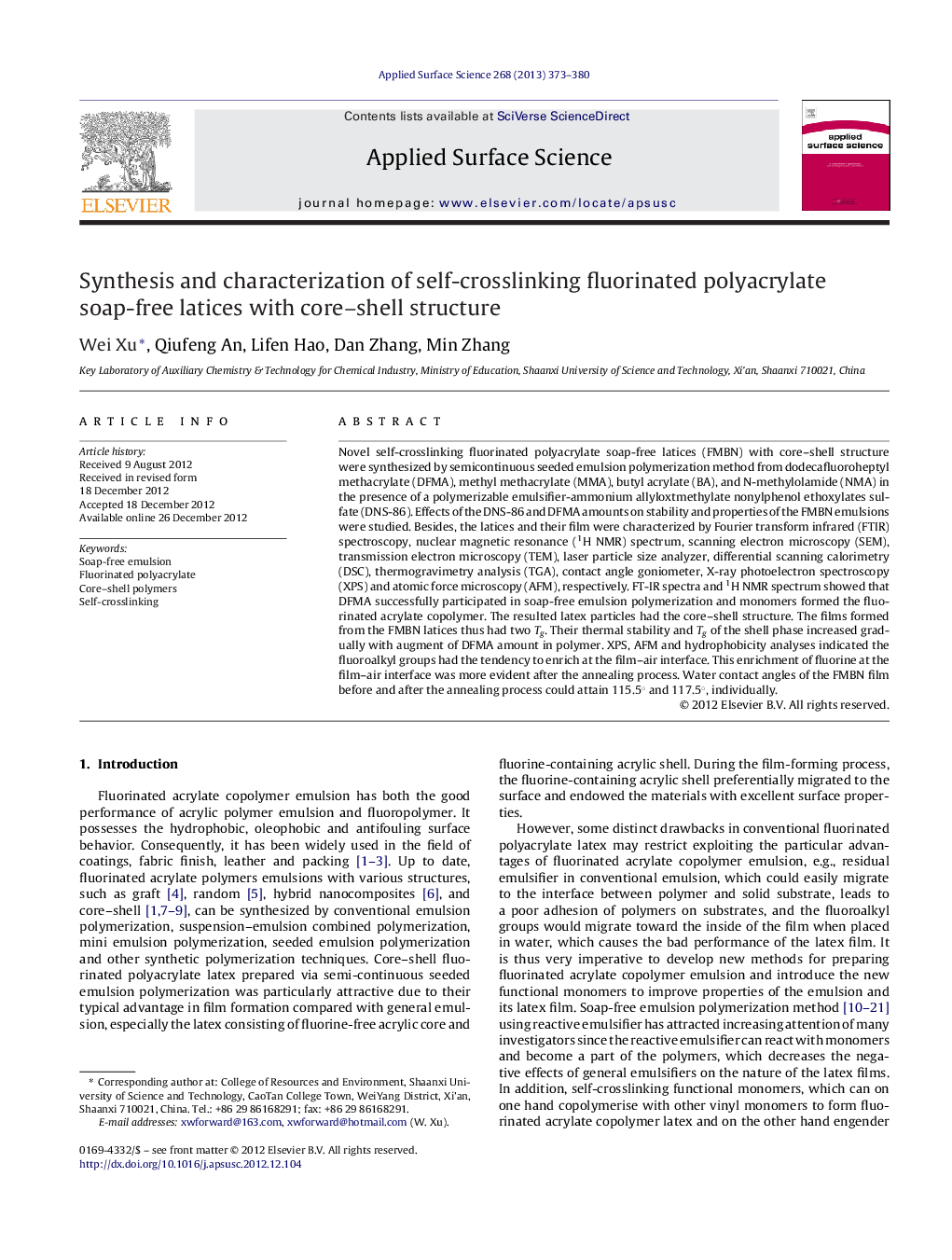| Article ID | Journal | Published Year | Pages | File Type |
|---|---|---|---|---|
| 5360673 | Applied Surface Science | 2013 | 8 Pages |
Novel self-crosslinking fluorinated polyacrylate soap-free latices (FMBN) with core-shell structure were synthesized by semicontinuous seeded emulsion polymerization method from dodecafluoroheptyl methacrylate (DFMA), methyl methacrylate (MMA), butyl acrylate (BA), and N-methylolamide (NMA) in the presence of a polymerizable emulsifier-ammonium allyloxtmethylate nonylphenol ethoxylates sulfate (DNS-86). Effects of the DNS-86 and DFMA amounts on stability and properties of the FMBN emulsions were studied. Besides, the latices and their film were characterized by Fourier transform infrared (FTIR) spectroscopy, nuclear magnetic resonance (1H NMR) spectrum, scanning electron microscopy (SEM), transmission electron microscopy (TEM), laser particle size analyzer, differential scanning calorimetry (DSC), thermogravimetry analysis (TGA), contact angle goniometer, X-ray photoelectron spectroscopy (XPS) and atomic force microscopy (AFM), respectively. FT-IR spectra and 1H NMR spectrum showed that DFMA successfully participated in soap-free emulsion polymerization and monomers formed the fluorinated acrylate copolymer. The resulted latex particles had the core-shell structure. The films formed from the FMBN latices thus had two Tg. Their thermal stability and Tg of the shell phase increased gradually with augment of DFMA amount in polymer. XPS, AFM and hydrophobicity analyses indicated the fluoroalkyl groups had the tendency to enrich at the film-air interface. This enrichment of fluorine at the film-air interface was more evident after the annealing process. Water contact angles of the FMBN film before and after the annealing process could attain 115.5° and 117.5°, individually.
Graphical abstractSelf-crosslinking fluorinated polyacrylate soap-free latices (FMBN) were prepared in our work. There were many little protuberances or peaks on the FMBD film dried at room temperature and after the annealing process, which were believed to be resulting from the phase-separated fluoroalkyl groups. The surface roughness of the FMBN film after the annealing process seemed more than that before annealing process, RMS roughnesses of those two films attained 26.84 and 9.754 nm, respectively. In addition, water contact angles on those two polymer films were 115.5° and 117.5°, respectively.Download full-size imageHighlights⺠We synthesized series of self-crosslinking fluorinated polyacrylate soap-free latices. ⺠Many little protuberances appeared on the fluorine-containing FMBN film surface. ⺠Some peaks and little protuberances appeared on that film after annealing process. ⺠Surface roughness of the FMBN film after the annealing treatment became larger. ⺠Water contact angles on those two polymer films were 115.5° and 117.5°, respectively.
